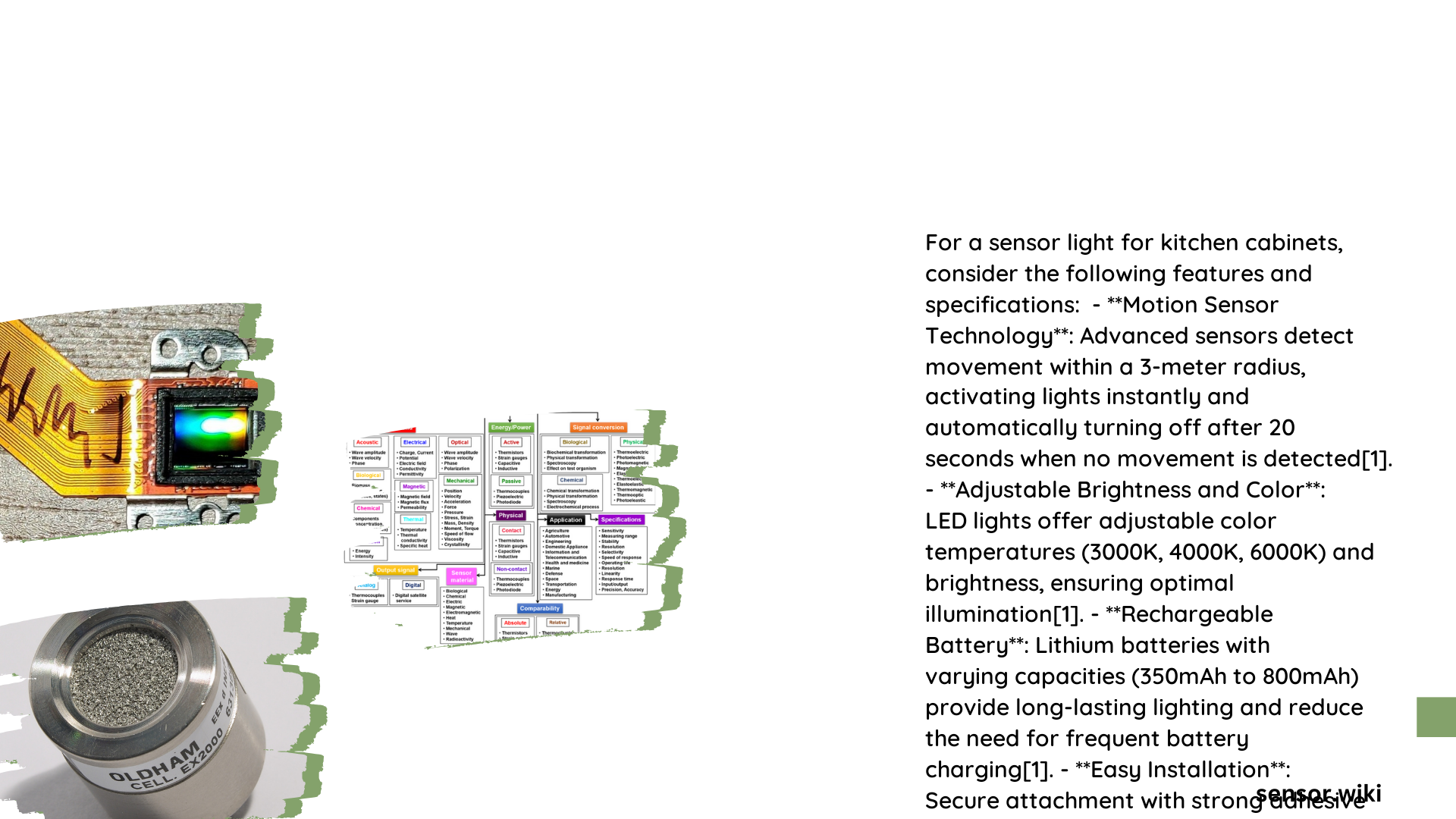Sensor lights for kitchen cabinets revolutionize home lighting by providing hands-free, energy-efficient illumination that activates automatically when you approach. These intelligent lighting solutions use advanced motion detection technologies to brighten dark cabinet spaces, enhance kitchen functionality, and create a modern, convenient cooking environment without manual switching or permanent electrical installations.\n\n## What Are Sensor Lights for Kitchen Cabinets?\n\nSensor lights for kitchen cabinets are compact, wireless lighting systems designed to automatically illuminate when motion is detected. These innovative devices typically use passive infrared (PIR) sensors to identify human presence, providing instant, hands-free lighting in hard-to-reach areas.\n\n### How Do Motion Sensors Work in Kitchen Lighting?\n\nMotion sensors in kitchen cabinet lights operate through several key mechanisms:\n\n- Passive Infrared (PIR) Detection: Identifies heat signatures from human movement\n- Ultrasonic Wave Sensing: Measures frequency changes caused by motion\n- Infrared and Microwave Hybrid Systems: Combines multiple detection technologies\n\n### What Are the Key Benefits of Sensor Lights?\n\n1. Hands-Free Operation\n – Automatic activation when approaching\n – No manual switches required\n\n2. Energy Efficiency\n – Turns off automatically when no motion detected\n – Reduces unnecessary power consumption\n\n3. Enhanced Kitchen Functionality\n – Illuminates dark cabinet spaces\n – Improves visibility during cooking\n\n## Technical Specifications Comparison\n\n| Brand | Detection Range | Battery Life | Response Time | Installation Method |\n|——-|—————-|————–|—————|———————|\n| Finlew | 3 meters | 350-800mAh | 20 seconds | Magnetic/Adhesive |\n| Lepotec | 10 feet | 1500mAh | 20 seconds | Magnetic/Tape |\n| LetiFly | 2-4 meters | 3000 LED hours | 15 sec – 5 min | Adhesive/Magnetic |\n\n## What Should You Consider Before Purchase?\n\n### Sensor Sensitivity and Range\n\nConsider these factors when selecting sensor lights:\n\n- Detection Angle: Wider angles provide better coverage\n- Sensor Distance: Ensure sufficient range for your cabinet layout\n- Response Speed: Quick activation prevents frustration\n\n### Power and Battery Considerations\n\n- Rechargeable Options: USB-powered models offer convenience\n- Battery Capacity: Higher capacity means longer operational time\n- Charging Mechanism: USB-C provides faster charging\n\n## Installation Best Practices\n\n1. Clean surface thoroughly before mounting\n2. Choose between magnetic or adhesive attachment\n3. Position sensors for optimal motion detection\n4. Test different locations for best performance\n\n## Potential Limitations\n\n- False Triggers: Pets or sudden movements might activate lights\n- Battery Replacement: Rechargeable models require periodic charging\n- Initial Cost: Higher upfront investment compared to traditional lighting\n\n## Expert Recommendations\n\n- Start with 1-2 sensor lights to test effectiveness\n- Choose models with adjustable sensitivity\n- Consider kitchen layout and cabinet configuration\n\n## Maintenance Tips\n\n- Clean sensors periodically\n- Check battery connections\n- Update firmware if available\n- Store in moderate temperature environments\n\nSensor lights for kitchen cabinets represent a smart, modern solution for improving kitchen functionality and convenience. By understanding their technologies, benefits, and limitations, you can make an informed decision that transforms your kitchen lighting experience.\n\n### Reference:\n- Finlew Wireless Under Cabinet Light\n- Lepotec 30 LED Wireless Under Cabinet Light\n- LetiFly Cabinet Under Lighting

